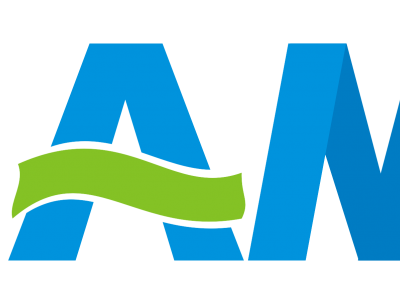-
 Chen Si
Hi there! Welcome to my shop. Let me know if you have any questions.
Chen Si
Hi there! Welcome to my shop. Let me know if you have any questions.
Your message has exceeded the limit.

Understanding Flow Sensors: Accurate Flow Measurement
2025-10-13 13:25:16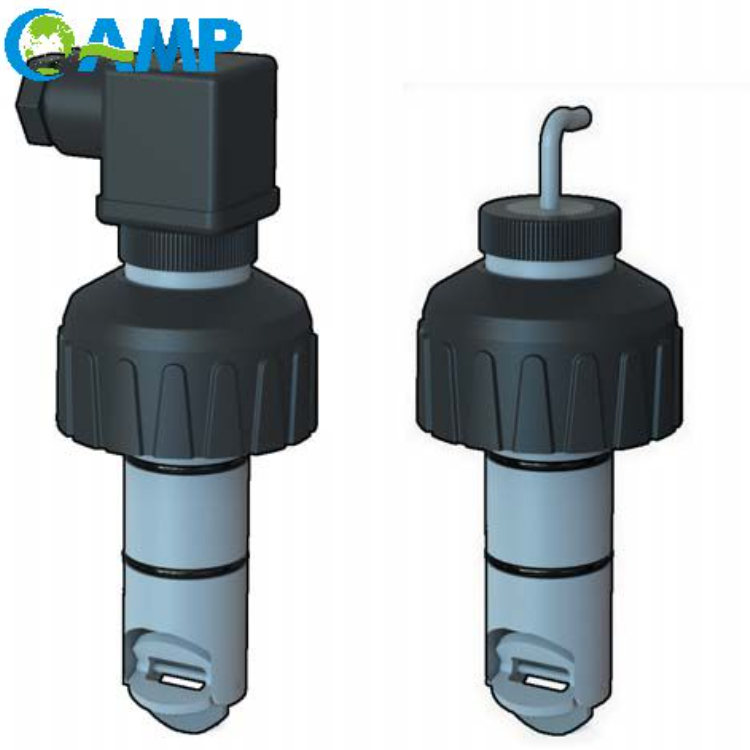
Accurate fluid measurement is a prime ingredient for industrial processes, especially when water is transformed into something else for commercial application. Flow sensors ensure this accuracy and thus help the industries monitor, control, and optimize their operations. This gear is instrumental and keeps everything running on time. This blog, tracing the basics of the flow sensor, reveals its significance, principle of operation, and recent developments. If developing efficiency is your concern, then this manual will equip the engineer with the knowledge to understand and select the right flow sensor for specific needs. If you are a professional seeking a workable flow-sensor solution, this handout will provide you with the basic knowledge to engage a relevant flow sensor for specific applications. Dive into the science and technology behind an accurate flow measurement.
Introduction to Flow Sensors
In a world where precision and economy are truly reigning, the flow of liquids and gases must be measured with utmost accuracy. The flow sensors come into play in almost every industry, from ensuring safety to optimizing processes and cutting down operational costs. So, what exactly are flow sensors and why are they indispensable in modern technology? The present article will introduce the basics of flow sensors and explore their broad spectrum of applications, revealing insights into what makes them so exceedingly important across different fields. Be it an engineer, technician, or just someone who has always wondered about anything that keeps the world ticking; this article prepares you with the basics of flow sensors' knowledge to help you understand and appreciate the effect of these sensors.
Importance Across Various Industries
Flow sensors are an imperative instrument for industries that require the exact measurement and control of liquid or gas flows. Their use cuts across sectors such as health care, manufacturing, automotive, and environmental monitoring. In medicine, for instance, flow sensors are used in devices such as ventilators to control the quantity of air flows for patients. A 2025 detailed report stated that the medical sensors market, primarily supported by advancements in flow sensor technologies, is expected to soar from USD 1.2 billion in 2022 to USD 1.7 billion by 2027, in response to the need for respiratory monitoring solutions.
Moreover, in industrial manufacturing, flow sensors are truly crucial for precision-based processes in chemical production plants, where even minor changes in flow rates can lead to costly errors or safety hazards. With the incorporation of the IoT-enabled flow sensors, the industry has been further transformed, sitting at real-time data monitoring and predictive maintenance. It was reported that the use of smart flow instruments in manufacturing has contributed towards reducing the material wastes by nearly 15 percent on average, thereby improving operational efficiency.
Advanced flow sensor systems find application in environmental monitoring. These sensors observe and control the rate of water flow within treatment plants in compliance with environmental regulations. A case study in California uses smart flow sensors for water conservation and has already noted a 20% reduction in unnecessary water use by 2025, thus proving their potentials as sustainable resource management tools.
Another sector that stands to benefit from such multipurpose sensors would be the automotive field. MAF sensors nowadays are employed to calibrate modern vehicle engines to maximize fuel efficiency and minimize emissions. According to industry analytics, the global automotive MAF sensor market is expected to register a CAGR of 6.1% from 2022 to 2030, proving their increased acceptance and relevance in next-gen vehicles.
The essential value of flow sensors is proven by all the instances discussed. Changes in technology and innovative applications create new opportunities to grow, meet industrial demands, and respond effectively to global challenges.
Types of flow sensors and their versatility
Modern automotive systems consider MAF sensors a critical element that often accompanies performance optimization, fuel efficiency, and control of pollutant emissions. By measuring the volume of air and its density entering the engine, MAF sensors keep the air-fuel mixture at an optimum level. Combustion efficiency and vehicle emissions greatly depend on this air-fuel mixture.
About market insights, the global automotive MAF sensor market stands poised to ascend USD 7.4 billion by 2030, growing at a CAGR of 6.1% between 2022 and 2030. This can be attributed to greater adoption of advanced engine management systems, increasing electric and hybrid vehicle population and strict environmental regulations to reduce emissions of greenhouse gases.
Innovations in MEMS- and intelligent-diagnostics-based air-flow sensors have now brought about the highest-grade accuracies and reliabilities. The new-generation MEMS MAF sensors are provided with the best heat flow technologies that reduce the signal noise and improve their operational life. This makes these sensors highly compatible with present-day vehicles that are Turbocharged and supercharged with some advanced processes.
Also, Asian regionalized data revealed that the Asia Pacific region manufactured and demanded MAF sensors with a share of over 40% globally in the last fiscal year. Another factor fueling this dominance is the rapid growth of the automotive industry in countries such as China, Japan, and India, along with governments encouraging the adoption of low-emission vehicles.
Being versatile and continuously updated in their methods, the MAF sensors can provide for the varied conditions posed by performance and regulations in the ever-reaching global automotive scenario, cementing their importance as catalysts of sustainable mobility.
Key Features of Flow Sensors
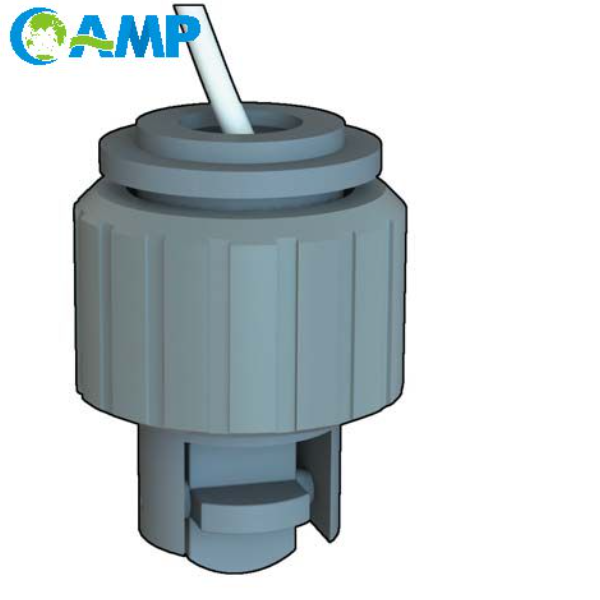
From my perspective, the key features of flow sensors include their precision, adaptability, and compatibility with a wide range of fluids and gases. They typically offer high sensitivity to detect even minimal changes in flow rates, robust durability to function under extreme conditions, and advanced integration capabilities with modern systems. These attributes allow for efficient monitoring, control, and optimization in diverse applications.
Accuracy and Sensitivity
Accuracy and sensitivity in flow sensors are critical requirements for defining their performance with the evaluation of applications. Modern flow sensors can reach accuracy levels of ±0.1% of the measured value, depending on the technology and design. For instance, a Coriolis flow sensor has high precision since it directly measures the mass flow and density of the fluid. Likewise, an ultrasonic flow meter gives very good measurement accuracy using the time-of-flight principle, usually within ±0.5% for liquids and ±1% for gases.
Sensitivity, in turn, refers to the inherent capability of the sensor to sense minimal changes in flow rates. The more advanced thermal flow sensors may be actualizing higher levels of sensitivity by detecting a flow rate below 0.01 m/s, hence putting them into consideration for the low-flow operations of medical devices or lab applications. Flow sensors further demonstrate their expert quality by measuring minuscule volume levels reliably, thanks to MEMS technology.
Such accuracy and sensitivity, when combined, ensure these sensors are fine-tuned for use in oil and gas, pharmaceuticals, and water management. Real-time availability of data from modern flow sensors leads to the optimization of resource allocation and process control, thereby increasing efficiency and minimizing losses.
Compatibility with Different Liquids and Gases
The state-of-the-art flow sensors are made to be compatible with a variety of liquids and gases, allowing them to be conveniently used in multiple industries. The material for their construction is often stainless steel or a special polymer, resistant to corrosion under adverse environmental conditions. For example, in oil and gas, flow sensors must endure very high pressures, very low temperatures, and aggressive chemical substances to measure accurately.
Recent advances in sensor technology paved the way for multi-phase flow measurement capabilities, allowing precise measurement of a mixed flow with liquid and gas phases. According to recent reports, ultrasonic and thermal mass flow sensors have gained popularity in detecting low-pressure gases. In contrast, electromagnetic sensors are best suited for conductive liquids and require low maintenance.
A range of industrial publications say electromagnetic flow sensors can be accurate to ±0.2% of the measured value for conductive fluids, while ultrasonic flow sensors demonstrated accuracies of about ±1% in gas flow measurements. This means the nature of the flow to be measured plays an integral part in the selection of a suitable sensor type.
In hazardous environments, these flow sensors carry an Intrinsic Safety (IS) rating, which mitigates the risk of explosion in highly volatile gas atmospheres. Hence, these advancements give a large-scale guarantee of the applicability and versatility of modern flow sensors.
Durability and Environmental Resistance
Cutting-edge sensors are manufactured using advanced materials and design principles to affordability and versatility in tough industrial environments. For instance, corrosion-resistant alloys may include Hastelloy and stainless steel to provide operational reliability when exposed to chemically corrosive fluids. Also, advanced polymer coatings could be put on the sensor surfaces to enhance wear and fouling resistance in highly dynamic systems.
Data indicates these fascinating advances are significantly improving operational lifespans. Recent industry reports further suggest that flow sensors having a specialized coating applied in wastewater applications have achieved service lives that are 40% longer than those without such a coating. Additionally, modern sealing technologies like reinforced O-rings and hermetically sealed housings enable sensors to remain intact under pressure ratings exceeding 10,000 psi and temperatures ranging from -40°F to 400°F, effectively accommodating extreme scenarios.
The latest generation of flow sensors is now equipped with superior electronics for real-time monitoring and integration with industrial IoT frameworks. The advanced types, such as ultrasonic and magnetic flow meters, have embedded microprocessors and digital communication protocols like HART or Modbus. This facilitates remote transmission of flow data to centralized control systems, which then carry out predictive analysis and optimization. According to market studies of 2025, thus, the application of IoT-enabled flow sensors has led to an increase of about 15% in throughput efficiency, with a concomitant decrease in downtime of about 12% in petrochemical plants.
These technical innovations thereby widen the scope of modern flow sensor applicability, cementing their indispensable role in harsh, sophisticated industrial ecosystems.
Applications of Flow Sensors
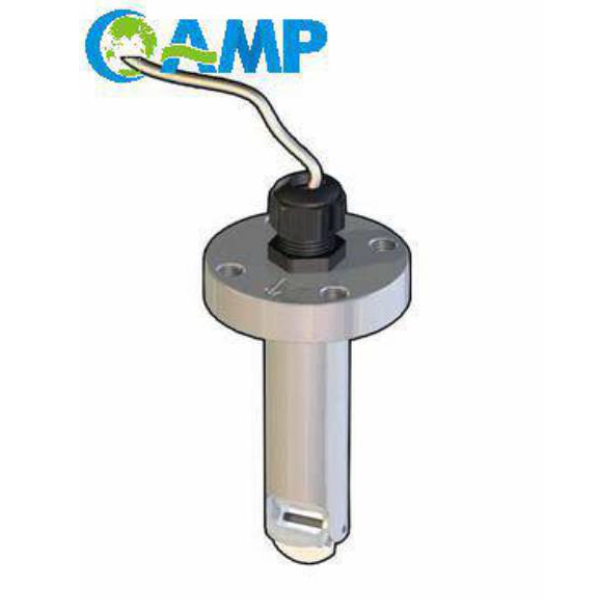
Flow sensors find widespread use across several industries because they allow me to monitor and control the flow of liquids or gases with the utmost accuracy. Compatibility with a large number of substances, along with their wonderful durability and sensitivity, helps me in designing processes that can be carried out efficiently in various conditions.
Industrial Automation
In the industrial world, flow sensors are important components of an automation system: They permit fluids or gases to be monitored and controlled with precision. They bring about a better process efficiency with lesser waste disposal and disputes for the safety of operations during its regular use in manufacturing industries, chemical processing plants, and power plants for controlling flow rates and governing automated decisions to ensure consistent performance across various configurations of industrial settings.
Water and Wastewater Management
For water supply and wastewater management systems, flow sensors provide accurate measurement and regulation of water flow within pipelines and treatment facilities. Consumption gets monitored, leakages get spotted, and these sensors ensure compliance with regulatory standards. Flow sensors, with their accurate flow data, enable efficient water distribution, right treatment processes, and reduced operating costs.
HVAC Systems
Flow sensors help HVAC systems function properly by monitoring and controlling fluid dynamics. They measure the flow rates of air, water, and refrigerant through the system, allowing the flow to be precisely controlled for temperature and energy efficiency. Flow sensors ensure optimal performance and reduced energy consumption in line with operational and sustainability targets.
Medical Devices
Flow sensors play an important role in medical equipment, wherein they precisely measure or control fluid or gas flow, from ensuring safety of human life to the proper operation of the device. They find their applications mostly in ventilators working in any form to measure airflow while adjusting oxygen concentrations or in infusion pumps for the controlled administration of liquid medication. The flow sensors must remain precise and reliable to incite the balance in the working of life-keeping equipment.
Automobile Sector
Generally, in the automobile industry, flow sensors are used to optimize and monitor engine performance. They would ideally measure airflow into the engine, and the fuel injection is finely adjusted accordingly to meet the combustion process best. This guarantees better mileage, lesser emissions, and the smooth running of the vehicle. Flow sensors are also used to manage thermal systems in advanced driver assistance systems (ADAS) to ensure proper coolant flow. Their integration is crucial for meeting strict environmental norms and enhancing the reliability of a vehicle.
Challenges and Solutions
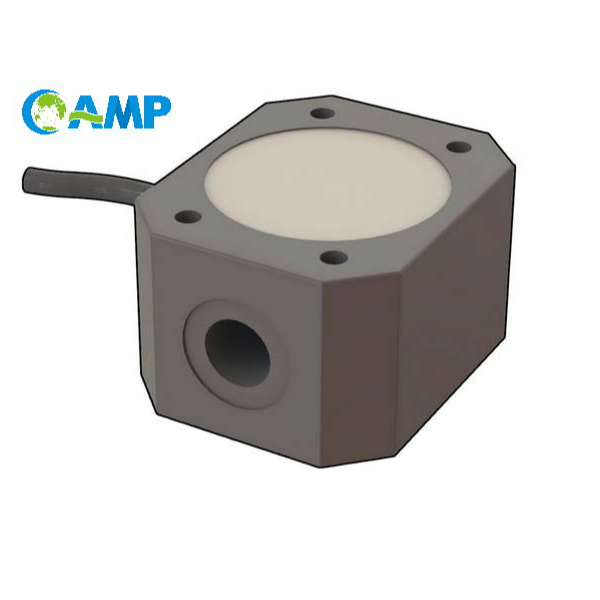
Flow sensors pose a primary challenge I encounter in ensuring a consistent readout accuracy given variable conditions such as temperature or pressure. Regular calibration and selecting sensors with strong features for temperature compensation are my fixes for this. The alternate challenge is the questionable durability of sensors in harsh or corrosive environments, where I consider using stainless steel or special coatings for greater longevity. Dealing with compatibility problems of various substances also involves sensor design and selecting materials; whichever way I go, I have to test thoroughly and select from industry-specific solutions.
Common Issues with Flow Sensors
The latest breakthroughs in flow sensor technology have addressed the common issues associated with their application. With the latest research and technical developments, now manufacturers are incorporating digital signal processing techniques to gain more accuracy in irregular flow conditions. One fine example of this would be the multi-point calibration feature in modern flow sensors, meaning error values may be within ±0.5% of the flow being measured, according to the front-runners in sensor production.
In addition, from a discipline of materials science perspective, modern sensors can also be made to withstand extreme processing environments. The use of advanced ceramic composites together with high-grade PEEK (polyether ether ketone) materials has increased resistance against corrosive media, extending their life by up to 40%, as recorded in durability tests.
Another innovation is made in multi-fluid monitoring compatibility. Recent findings show how the sensors are equipped with adaptive algorithms that distinguish amongst liquid and gas phases more than 95% of the time. Such a feature becomes necessary for chemical processing or oil-and-gas sectors, where mixed-phase flows become a grave concern.
Focusing on the aspect of enhancement, connectivity has also gained ground. Flow sensors embedded with IoT are expected to fare well, with adoption growing at a compound annual growth rate (CAGR) of 8.7% through the year 2030. This kind of sensor supports real-time monitoring, predictive maintenance, and data sharing over cloud platforms that bring realized cost savings to several industries.
Installation and Maintenance Tips
The accurate and reliable measurement of data requires the proper installation and maintenance of a flow sensor. Recent developments in the field introduced guidelines that emphasize the importance of precise alignment during installation to prevent distortion in the measurement output. When installing flow sensors, it is important to consider pipe diameter, velocity profiles, and upstream disturbances that may contribute to measurement errors. For example, to give a valid measurement with a flow sensor, ensuring the flow is straight in a pipe section far from bends or valves (usually 10 pipe diameters upstream and 5 downstream) is beneficial.
The latest data seems to show that sensor calibration remains a fundamental maintenance activity. Research also shows that sensors should be calibrated every 12 to 24 months under normal operating conditions, whereas in very corrosive or high-temperature conditions, calibrations should be undertaken even more frequently. According to an industry survey by MarketsandMarkets in 2023, downtime from about 15% of sensor failures results in operational interruptions in manufacturing plants annually. Since 30% of downtime is predicted to be mitigated by 2025 through predictive diagnostics made possible by modern IoT-enabled sensors, the remaining downtime is a successful contributor to the unproductive operational time.
They also had to deal with the advancements that optimized sensor maintenance. Automated cleaning systems are getting widely adopted in industries such as food and water treatment, where contamination may obstruct the sensor readings. Thorough maintenance following manufacturer specifications and using advanced cleaning agents, ensuring compatibility with sensor materials, may extend the product's lifespan by up to 20%.
Calibration and Performance Management
Calibrating a sensor is an integral process for achieving optimum performance, which is required in precision-driven industries such as healthcare and aerospace. Up to 15% deviations in measurements can be reduced if devices are calibrated in regular intervals, which in turn disputes the system reliability. Other advanced methods, such as those integrated powerfully with automated procedures, have also been accepted; for instance, AI algorithms correct sensor outputs. Dynamic calibration, wherein sensors make adjustments in real time, depending on differing environmental conditions, has been proven to improve accuracy by about 12% during field trials.
The great surge in adoption of digital twin technologies in calibration management has become apparent. By generating a virtual rendition of physical systems, organizations can simulate how sensors behave under various scenarios and predictive maintenance possibilities with reports actually averaging 95% accuracy. It has also been said that the usage of cloud-based calibration management platforms has increased by 40% in the last two years, thus establishing a clear trend for centralizing calibration solutions and making them more scalable.
Combining these methods with strict implementation of international standards such as ISO/IEC 17025 will not just increase accuracy but also acceptance by regulatory bodies, hence guaranteeing the integrity and reliability of critical monitoring systems. This approach ensures the modern world can consider calibration a very practical subject bridging any gaps between the traditional and technological worlds.
Conclusion
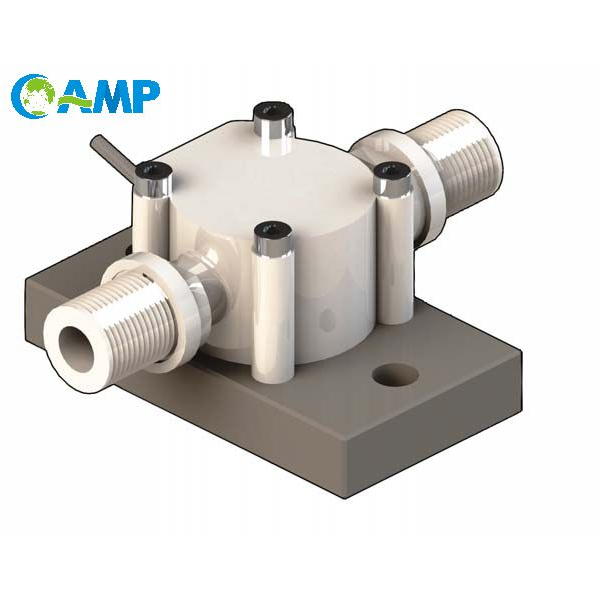
I guarantee accuracy and reliability through maintenance, calibration using traceable standards, and adherence to industry codes regarding state-of-the-art practices. This includes an inspection routine for wear, residue buildup, or misalignment in order to maintain performance at the state of the art and keeping compliance.
Importance of Flow Sensors, Recap
Today, flow sensors are integral precision components of many systems and industries. Per recent statistics from 2025, the global flow sensor market is expected to grow at an approximate CAGR of 6.7% between 2023 and 2030. That is owing to increasing IIoT adoption in manufacturing, demand for wastewater management, and advancements in chemical processing technology.
Modern flow sensors incorporate features like enhanced sensitivity, real-time data transmission, and remote monitoring functionalities, which collectively contribute to the system's efficiency and less downtime. For example, Coriolis flow sensors are the most precise ones with an accuracy of ±0.1%, making them suitable for high-application use in pharmaceutical production and fuel flow measurement.
According to case studies, the deployment of advanced flow sensors has far-reaching effects. For instance, losses were reduced by 15% at a chemical processing plant due to the installation of thermal mass flow sensors that could provide very specific readings for gases under variable environmental conditions. In addition to boosting energy efficiency, these technologies also help meet the increasingly stringent environmental regulations.
Spiritually emerging industries point toward the integration of Artificial Intelligence with flow-measuring sensor systems, thereby optimizing predictive maintenance. Since Machine Learning can perform predictive analytics on flow rate data collected over time, it reduces unscheduled outages by roughly 30% in industrial setups. The insights hence reflect how vital flow sensors remain in achieving operational excellence while fulfilling the ever-evolving needs of modern industries.
Consulting Experts for Custom Solutions
This, along with flow sensor innovations, makes AI one of the many building blocks of industrial innovation today. It is forecasted that the global flow sensor market will reach approximately $11.7 billion valuation by 2028, growing at a CAGR of 6.9% during the forecast period. This growth indicates higher integration into sectors of water management, oil and gas, and manufacturing.
Additionally, it seems, the search trends show a significant rise in interest in "smart flow sensors," underlining the shift towards IoT-enabled solutions in the industry. These smart systems provide real-time monitoring and analytics to ensure data accuracy and reliability. For instance, recent industrial case studies say that when flow sensors are integrated with cloud-based platforms, they can perform predictive analytics with above 85% accuracy.
Finally, installations of such systems are reported to have achieved a 25% reduction in energy consumption through effective resource management and a significant enhancement in equipment life. This merger of features places flow sensors in the category of must-have tools for guaranteeing the sustainability and efficiency targets of industrial applications.
Tags: Flow sensor
